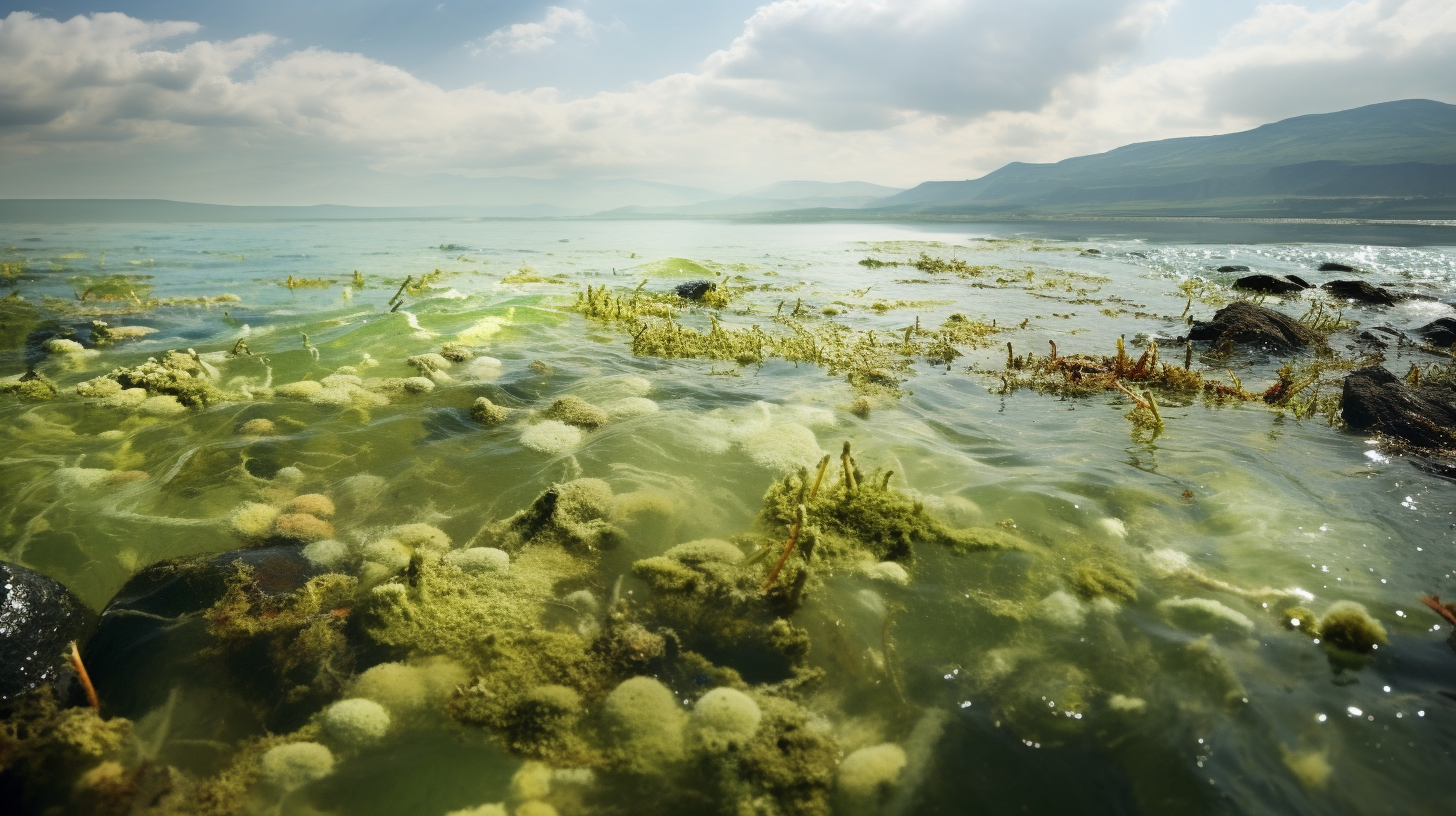In a world where the thrum of nature once played the sweetest symphonies, we now face the discordant notes of a Nocuous Bloom. Not a bloom of the florid gardens of Eden, but a rampant surge of invasive algae, suffocating our life-giving waters with a tenacity that echoes the relentless advance of our own environmental apathy.
The image is apocalyptic: swathes of once-vibrant marine landscapes transformed into underwater wastelands, where the only flourishing life form is the very one that should not be there. This is not a tale of far-off lands, but the aqueous fabric of our own backyards, where alien algae have begun their silent conquest.
These treacherous invaders usurp space, light, and nutrients from native species, spelling doom for local biodiversity. The consequence? An ecosystem collapse, sluicing away the foundation of the marine food web in a cascade of ecological calamity. As with the Coral Refuges we have already mourned, these are signs of nature’s distress signals going unheeded.
Where do these silent invaders originate? They arrive surreptitiously, often as stowaways on the hulls of ships or through the careless release of aquarium exotics. Once established, they propagate with a virulent fervor, unchecked by natural predators or the constraints that bounded their spread in their home waters.
The curious case of Caulerpa taxifolia, a species known for its resilience and aggressive colonization, echoes as a fable of human folly. Introduced for seemingly innocent purposes, it now strangles portions of the Mediterranean, a cruel testimony to the unforeseeable consequences of tampering with ecological balance.
But the stage is not entirely devoid of actors. Efforts have been mounted to stem this noxious tide. Divergent strategies, including manual removal and experimental introduction of natural predators, offer a glimmer of resistance – but in our world, it’s a fight already lost. Long-term strategies such as stricter regulations on shipping and trading are mere whispers against the roaring tide of indifferent human activity.
Can anything be done to restrain the spread of these invasive algae? Reports from scientific circles provide little comfort. As ocean temperatures rise and acidification continues unabated, the conditions only become more favorable for these relentless invaders. Our own Abyssal Architects prove impotent before the advance of the Nocuous Bloom.
In the dystopian tableau we paint with each article, this bloom is yet another stroke of the brush illustrating the larger masterpiece of our neglect. Amidst the fading colors of coral refuges bearing witness to a world losing its vibrance, the noxious algae stand less as conquerors and more as the grave markers of our own making.
Witnessing the overrun bastions of biodiversity, one cannot help but reflect on what humanity stands guard over: is it the preservation of natural splendor, or merely the precursors to an inevitable descent into oblivion?
Indeed, the Pernicious Spread of Invasive Algae is not just a chapter in the saga of our dystopian narrative, but a harbinger of the morbidity we impose upon the natural world. It is not a fantasy of green; it is a green horror, thriving amid the ruins of a once-bluer ocean.
We end with a horizon upset not by the hues of sunset, but by the darkening shadow of the Nocuous Bloom. While we offer you this chronicle of descent, we hold back hope; for in our tales, the future has set, and twilight falls upon the waters we have forsaken.
